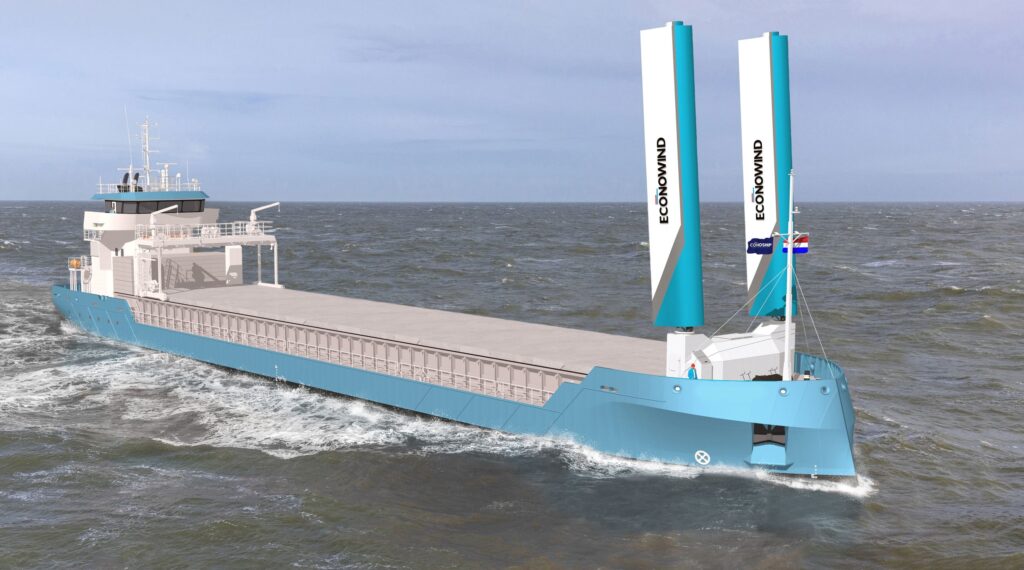Five new coasters with Ventifoils
Hartel Shipping & Chartering has ordered five newbuild 3,800 DWT coasters. The new vessels measure 89.42 m by 13.20 m and will be equipped with two Ventifoils in addition to two electric engines of 750 KW together.
Responding to the increased focus on sustainability, Hartel Shipping, a Hudig and Veder Group company, has opted for a diesel-electric propulsion line, allowing it to sail on sustainable fuels now and in the future. The newbuild vessels are powered by two 374 KW electric motors and have a total installed power of 749 kW.
The frequency-controlled diesel-electric power train regulates the speed of the propeller based on variables such as load factor, water level and sailing route, resulting in fuel savings of up to 35% and significantly lower emissions. Further energy savings, on this already remarkably efficient design, will be achieved by fitting a VentiFoil® system to the vessel. A further efficiency of 8% – 12% can be achieved with these sails.
Drift
The five coasters will be built by Groningen-based Conoship, which is increasingly focused on designing low-emission and sustainable vessels. The new coasters for Hartel Shipping were designed by Conoship as part of its CIP line, which includes a variety of hull sizes. All vessels in this line, some 30 of which are already being built worldwide, have a propulsion-optimised hull shape, a diesel-electric propulsion line and two to four Ventifoils on deck, depending on size.
According to the designers, this is a deliberate choice: even more wind support would place other demands on the hull shape: “It is true that for these coasters, the prevailing westerly winds in the North Sea are favourable for wind propulsion, but if you put even more Ventifoils on deck, the drift becomes too great, and you would have to drastically modify the hull shape.
With our designs, we have already achieved so many fuel savings – at least about 20, 30% over the past 15 years – that for us there is more profit in that than in further expanding wind propulsion. But it is also what the customer demands. On a transatlantic route, different principles apply than for coastal shipping, where you have to enter and exit ports much more often, and adjust your courses.”
Sources: Own newsgathering, courtesy of Hudig & Veder and Conoship.
Image: Hudig & Veder.


